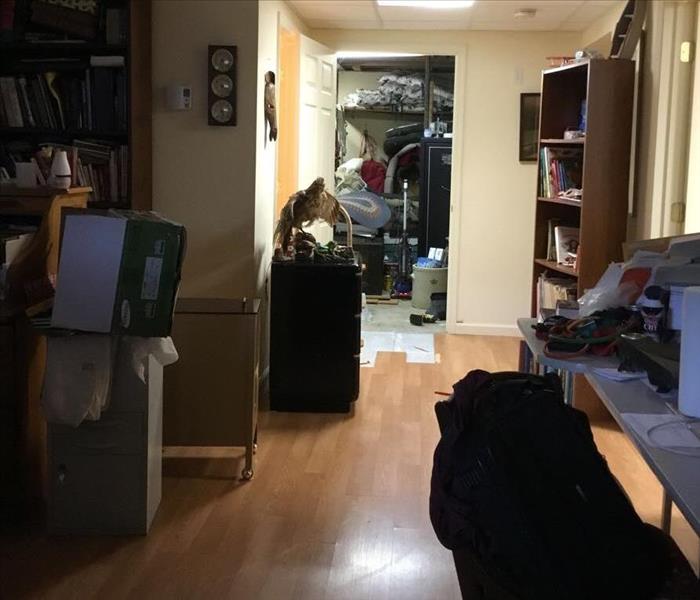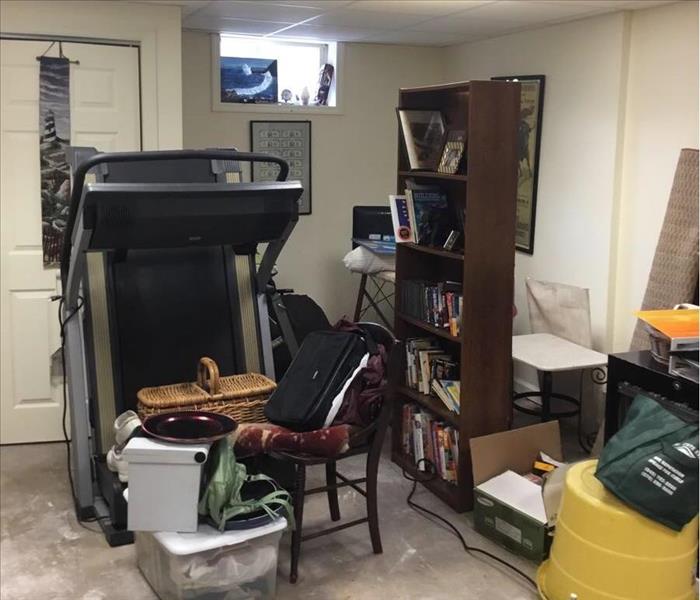
Step 4: Drying and Dehumidification
Our Water Damage Restoration Process
Once the majority of the water has been removed by extraction, it is time for the actual drying process to begin. Almost all building materials are porous, and therefore retain water. This retained water must be dried out in order to prevent damage to the materials or even mold growth on the affected materials. To do this, two things are needed: specialty drying equipment and water damage restoration professionals. SERVPRO of Southern Monroe County has both. Dehumidifiers and air movers are set-up, and SERVPRO Professionals monitor and track the drying progress. The goal is to remove all excess moisture as quickly as possible.
Drying / Dehumidification
Our Professionals will use room measurements, temperature, and relative humidity to determine the optimal number of air movers and dehumidifiers to dry your home or business. We’ll carefully monitor the progress using moisture meters until the materials return to acceptable drying goals.
- Use Dehumidification Equipment
- Use Monitoring Equipment to Track Progress
Monitor Floor and Walls
We check the moisture levels to monitor the drying process.
- Monitor Floors
- Monitor Walls
Drying Equipment
- Industrial-grade dehumidifiers help prevent secondary water damage like swelling and warping of floors, walls, and furniture.
- High-speed air movers create airflow across walls, carpets, pads, and furniture, which accelerates the evaporation of moisture.





 24/7 Emergency Service
24/7 Emergency Service




